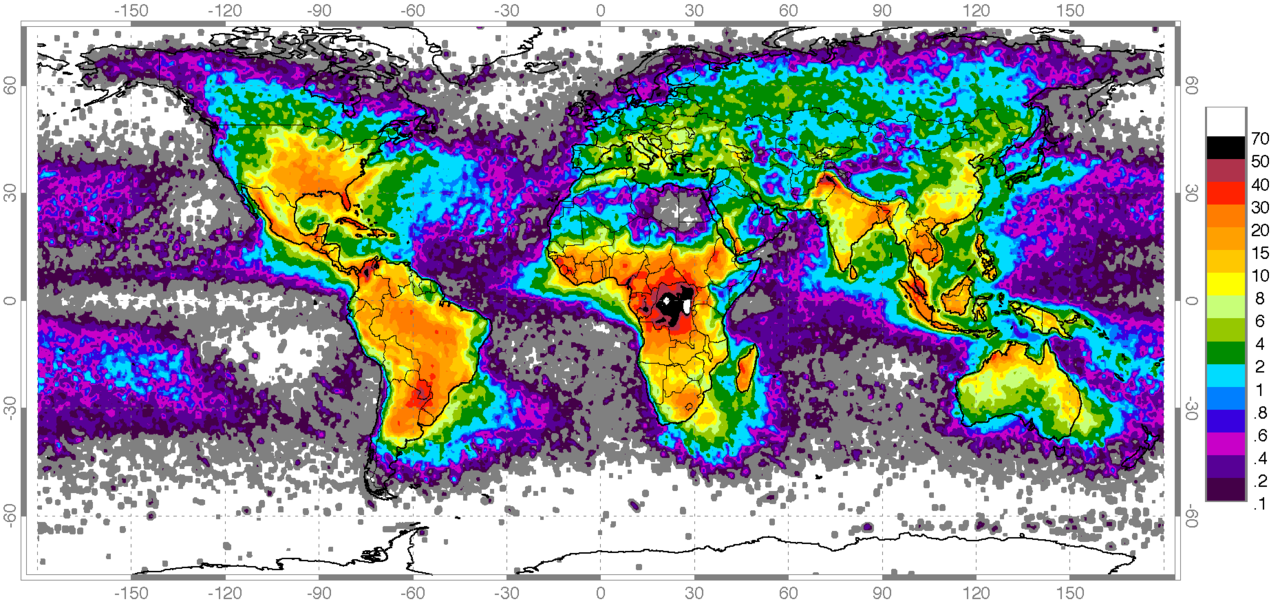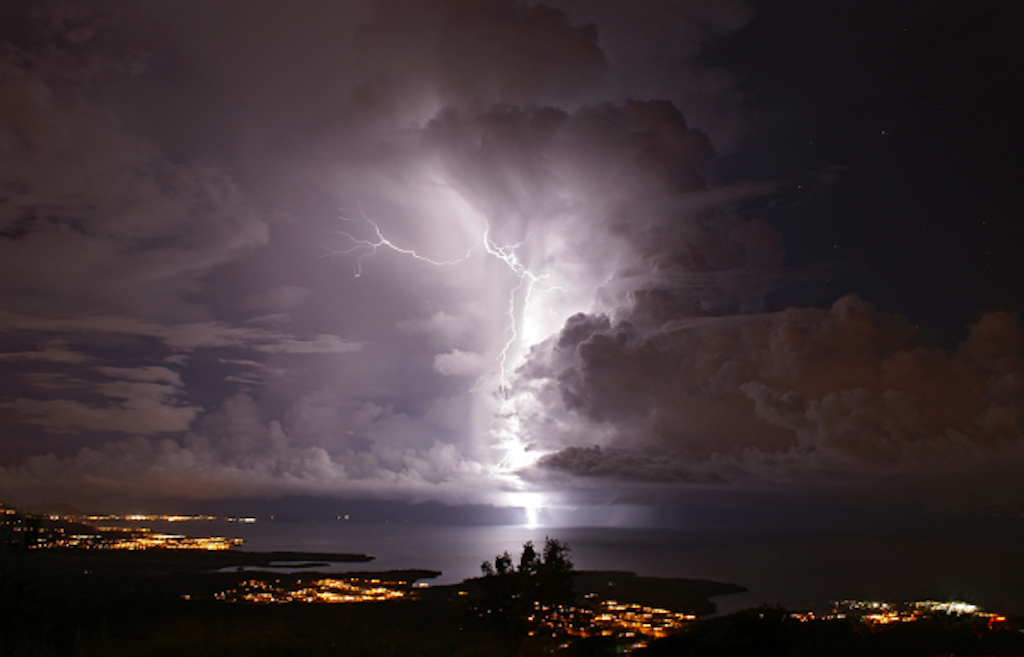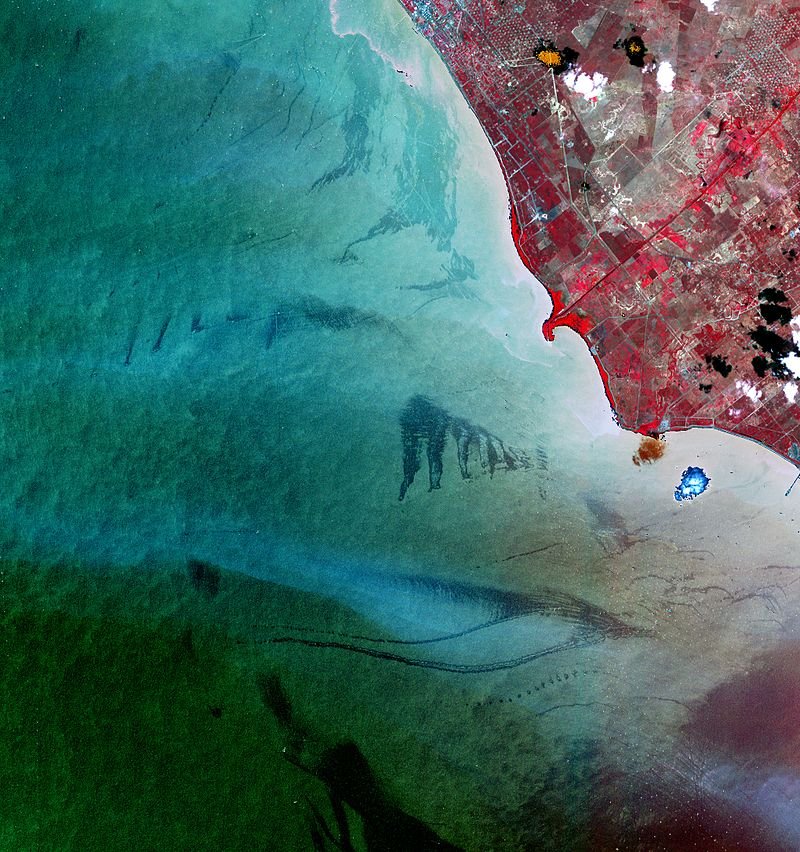Admittedly, due to safety issues, I did not have the pleasure to be there personally but I have heard a lot about this place even before I appeared in Venezuela. The Catatumbo lightning is a meteorological phenomenon that has been recognized worldwide and its occurrence has been studied for many years.

Catatumbo lightning occurs over and around Lake Maracaibo, User: NormanEinstein Licence:CC BY-SA 3.0
The indigenous people and ancient ethnic groups had witnessed this phenomenon and had considered it a calling from the gods or offerings that the planet gave them to keep them safe.
At present we recognize that the Catatumbo lightning is originated in the lower basin of the Catatumbo river and hence its name, to explain what this wonder of nature consists of we must begin by mentioning that this phenomenon is capable of happening more than 260 nights a year, which is a custom for the inhabitants of Zulia State in Venezuela, but for the eyes of tourists it is a spectacle of nature.
Another important fact is, that these lightning flashes have many distances between them and are not as close as the human eye perceives, so it occurs in several places around Lake Maracaibo.

Global map of lightning frequency--strikes/km2/yr. The high lightning areas are on land located in the tropics. Areas with almost no lightning are the Arctic and Antarctic, closely followed by the oceans which have only 0.1 to 1 strikes/km2/yr., Author: NASA Licence:Public Domain
There is almost no fantastic stories or myths of terror to tell, but if there are tales that marked a precedent thanks to the illumination of these lightning bolts, many historians attest that these reports are true and here is a hint of each of these to further nourish this meteorological phenomenon.
One of them is the legend of the Bari tribe which goes back to several years ago, within the indigenous culture of Zulia, one can still hear the legend of Gabarra and Zulia.
It tells the story that many years ago a Cacique called Cinera, chief of the tribe, who ruled a kingdom known now as Zulia, had a beautiful daughter bearing the same name as the State, Unfortunately, she was the only one among her sisters who had not been married.
Cínera asked the suitors for an offering to marry Zulia, it was then that Chimichagua, the father of Gabarra - one of the candidates, handed him a stone that shed flashes of magnificent light and offered it as a gift for the hand of his daughter.
This beautiful and rare stone dazzled the father and the offer was accepted.
On the day of marriage, Gabarra seized Zulia and the stone, they fled into the jungle, entering the shores of Lake Maracaibo far into its interior. Cínera seeing the treachery sent his best warriors to find and kill them, but they never succeeded. Nowadays one can see the flashes of light at night from the shore.
Another story favoured by all Zulia people shows how the Catatumbo lightning bolts are also known to protect the city of Maracaibo from Spanish invasions since colonial times.
The first participation was in the year 1585 when the crew of Captain Francis Drake was in charge of directing an invasion directly to the city of Maracaibo to loot the area, and according to the story, it was one of the most illuminated by Catatumbo's lightning nights, thwarting the intentions of the Spaniards.
But this was not the only attempt of the Spaniards to invade Venezuela from the Lake of Maracaibo, during the war of independence in 1823 another fleet of Spaniards tried to perform the same Francis Drake manoeuvre, begging Heaven to help them stay in darkness, but wise nature protected its children by illuminating the skies even more with flashes that only historians can describe with the most dazzling details of their lyrics.
The lightning originates mainly in the Catatumbo river, hence its name, however, it is not the only place where this lightning strikes from the sky, scientists have determined that these lightning flashes have different directions at night and should be considered as several lightning phenomena and not one.
Many meteorological references and encyclopaedias determine this phenomenon as Catatumbo lightning, but according to the Castilian language, it mentions more than one lightning bolt so one must consider here the plural form.
Main causes of these climatic phenomena are still a subject of debate among the meteorological societies.
Around the year 2000 a theory was corroborated in which explained that gases cause these electric discharges. Because of the methane from the oilfield below, the air above Lake Maracaibo had increased conductivity. These investigations were carried out by the University of Carabobo, however, there is no scientific proof of that this is completely true.
For almost 2 decades of research, it has been noticed that the main reason are collisions between the hot and cold air currents and the region’s unique topography.
During the nights the cold steam currents from the Andes Mountains descend to the basin of the Catatumbo river, there, clashing with hot Caribbean currents the thunderclouds are being formed. That’s where the party starts, in this vertically shaped cloud the segregation of negative and positive charges occur, creating a different voltage in its interior and below at the surface of the ground, here, the phenomenon that we know today as the Catatumbo lightning appears before our eyes. Actually every minute it’s about 28 lighting strikes, creating enough energy to power 100 million light bulbs.
Of course, when faced with a natural spectacle of such magnitude, one should think of all the studies, recognition and values, that scientists and institutions such as UNESCO can carry to provide an opportunity of recognizing and labelling this wonder of nature to humanity.
Some environmentalist dedicated their life acknowledging before the world the beauty of this phenomenon. The recognition as a UNESCO world heritage site was achieved in 2005 when the Organization decided to mention the Juan Manuel Ciénagas National Park and the epicentre of lightning.
Another acknowledgement that cannot be overlooked is that of the Guinness World Records. Where the Catatumbo lightning phenomenon was assigned for having 250 lightning bolts per km2 per year - the highest per square kilometre. Winning over the Kifuka village in the South Kivu in the Democratic Republic of Congo became the new “Capital of Lightning”. This was dated in 2014 and its protagonist was Erik Quiroga.
References
Photos: @highonthehog
Images: sources linked below
Bürgesser, R. E.; Nicora, M. G.; Ávila, E. E. Characterization of the lightning activity of Relámpago del Catatumbo, Journal of Atmospheric and Solar-Terrestrial Physics. 77: 241–247, 2012
Albrecht, R. I.; Goodman, S. J.; Buechler, D. E.; Blakeslee, R. J.; Christian, H. J. Where are the lightning hotspots on Earth?, Bulletin of the American Meteorological Society, 2016
Stock, M.J., D. Martínez Tong, Á.G. Muñoz, M. Stagg, R. Velásquez, Lightning Activity in Northwestern Venezuela, enviado a Meteorology and Atmospheric Physics, 2011
https://earthdata.nasa.gov/user-resources/sensing-our-planet/the-maracaibo-beacon
http://cmc.org.ve/portal/proyectos.php?proyecto=8










.jpg)